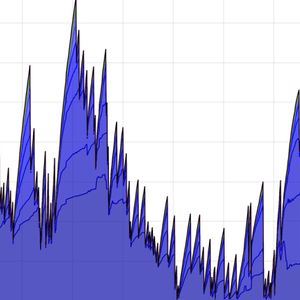Are you feeling a tremor in the financial world? It’s not just you. The landscape of asset allocation is undergoing a significant transformation, and traditional safe havens are no longer holding the same allure. According to a recent statement from Bitwise, a leading crypto asset manager, investors are increasingly turning their backs on government Treasuries, seeking refuge in alternative stores of value like gold and, most notably, Bitcoin. This isn’t just a minor adjustment; it’s a potential seismic shift in how investors perceive and protect their wealth. Let’s dive into what’s fueling this fascinating trend and what it means for the future of finance. Why Are Investors Rethinking Treasuries? For decades, U.S. Treasuries have been the gold standard – pun intended – of safe-haven assets. They were considered the bedrock of stability in any portfolio, especially during times of economic uncertainty. However, Bitwise Europe Research Director Andre Dragosch, in a recent interview with The Block, suggests a paradigm shift is underway. But why is this happening? What’s making investors question the once-unquestionable safety of Treasuries? Erosion of ‘Safest Asset’ Status: Dragosch argues that Treasuries are simply not seen as the ‘safest asset class’ anymore. This could be attributed to various factors, including concerns about rising national debt, inflation, and geopolitical instability. The perception of unwavering security is fading. Yield Concerns: While Treasury yields have risen, they may not be keeping pace with inflation or offering the kind of real returns investors are seeking, especially in a potentially inflationary environment. Investors are looking for assets that can preserve and grow their capital in real terms. Diversification Imperative: Modern portfolio theory emphasizes diversification. Relying solely on traditional assets like Treasuries may not be sufficient in today’s complex global economy. Investors are exploring a wider range of asset classes to enhance returns and manage risk. The Rising Appeal of Alternative Investments as Stores of Value As investors re-evaluate Treasuries, where are they turning? The answer, according to Bitwise, lies in alternative investments , particularly gold and Bitcoin. These assets are increasingly being viewed as robust stores of value, capable of weathering economic storms and even acting as hedges against traditional market volatility. Let’s examine why these alternatives are gaining traction. Gold: The Timeless Safe Haven Gold has a long and storied history as a store of value, dating back millennia. Its tangible nature, scarcity, and lack of correlation with traditional financial systems make it an attractive option during economic uncertainty. Dragosch highlighted the surge in gold inventories on the COMEX, indicating a clear increase in demand for the precious metal. Key benefits of gold as a store of value include: Historical Performance: Gold has historically performed well during periods of inflation and economic downturns. It’s often seen as a safe haven when other assets are struggling. Tangible Asset: Unlike digital or fiat currencies, gold is a physical asset. This tangibility provides a sense of security and can be appealing in a world increasingly dominated by digital finance. Limited Supply: The finite supply of gold contributes to its value proposition. This scarcity can make it a hedge against currency debasement and inflation. Bitcoin: The Modern Digital Gold While gold is the traditional safe haven, Bitcoin is emerging as the modern, digital counterpart. Born from the ashes of the 2008 financial crisis, Bitcoin was designed as a decentralized, censorship-resistant, and scarce digital currency. Its appeal as a store of value has grown exponentially in recent years, particularly among institutional and sophisticated investors. Dragosch’s statement about central banks reaching out to Bitwise U.S. to invest in spot Bitcoin ETFs is particularly noteworthy. The Czech Central Bank, among others, is reportedly considering allocating a portion of their Treasury holdings to Bitcoin ETFs. This is a significant validation of Bitcoin’s legitimacy as an institutional-grade asset. Key advantages of Bitcoin as a store of value include: Scarcity: Bitcoin’s supply is capped at 21 million coins, creating inherent scarcity. This scarcity is a fundamental driver of its value proposition. Decentralization: Bitcoin operates outside of traditional financial systems and government control. This decentralization offers protection against censorship and potential manipulation. Accessibility and Portability: Bitcoin is easily accessible globally and can be transferred and stored digitally, offering unparalleled portability compared to physical assets like gold. Growth Potential: Despite its volatility, Bitcoin has demonstrated significant long-term growth potential, outperforming many traditional asset classes over the past decade. Institutional Investors and the Shift to Bitcoin The involvement of institutional investors , including central banks, is a game-changer for Bitcoin and the broader crypto market. These institutions manage vast sums of capital and their entry into the Bitcoin space signals a maturing asset class. Why are these sophisticated players considering Bitcoin? Factor Traditional Treasuries Bitcoin Perceived Safety Decreasing Increasing (as alternative) Yield Potential Limited High (but volatile) Inflation Hedge Questionable Potentially Strong Decentralization Centralized Decentralized Growth Potential Limited Significant (Long-term) The table above highlights some key comparative factors. Institutional interest in Bitcoin is driven by a combination of factors, including: Seeking Higher Returns: In a low-yield environment, institutions are under pressure to find assets that can deliver meaningful returns. Bitcoin, despite its volatility, offers the potential for significant upside. Diversification Benefits: Bitcoin’s low correlation with traditional assets makes it an attractive diversifier for institutional portfolios. Fear of Missing Out (FOMO): As Bitcoin gains mainstream acceptance and its price appreciates, institutions risk being left behind if they don’t allocate to this asset class. Technological Innovation: Institutions are recognizing the transformative potential of blockchain technology and Bitcoin as a leading innovation in finance. Actionable Insights for Investors So, what does this shift mean for individual and institutional investors alike? Here are some actionable insights: Re-evaluate Asset Allocation: It’s time to reassess your portfolio’s reliance on traditional safe havens like Treasuries. Consider diversifying into alternative stores of value, including gold and Bitcoin. Understand Bitcoin’s Role: Educate yourself about Bitcoin’s fundamentals, its potential as a store of value, and its role in a modern portfolio. Start Small, Learn, and Adapt: If you’re new to Bitcoin or crypto, start with a small allocation and gradually increase your exposure as you become more comfortable. Consider Bitcoin ETFs: For traditional investors, Bitcoin ETFs offer a regulated and accessible way to gain exposure to Bitcoin without directly holding the asset. Stay Informed: The financial landscape is constantly evolving. Stay updated on market trends, regulatory developments, and expert opinions to make informed investment decisions. Conclusion: A New Era for Store of Value Assets? The message from Bitwise is clear: the investment world is changing. The traditional dominance of Treasuries as the undisputed safe haven is being challenged, and investors are actively seeking alternative investments that offer better returns, diversification, and protection against economic uncertainties. Bitcoin, alongside gold, is emerging as a leading contender in this new era of store of value assets. The potential involvement of central banks only underscores the magnitude of this shift. Whether this trend continues to accelerate remains to be seen, but one thing is certain: the investment landscape is becoming more diverse, dynamic, and decidedly more digital. To learn more about the latest Bitcoin trends, explore our article on key developments shaping Bitcoin institutional adoption.














